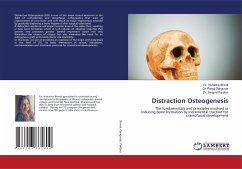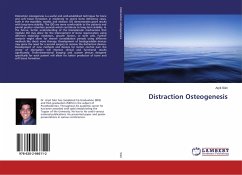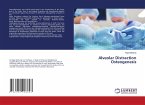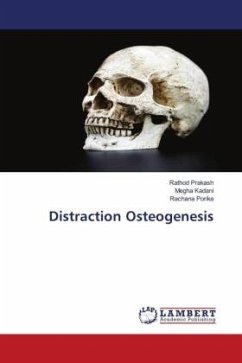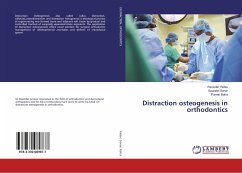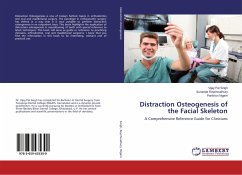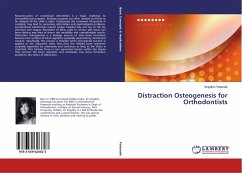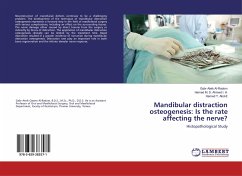Distraction Osteogenesis (DO) is one of the major recent advances in the field of orthodontics and dentofacial orthopaedics that aims at regeneration of new bone and soft tissue by tissue engineering achieved by gradually displacing a bone fragment after surgical osteotomy.A distraction appliance will impart tension around the callus thus, resulting in new bone formation which in turn induces an adaptive response that permits and promotes greater skeletal movement which not only diminishes the chance of relapse but also eliminates the need for an autogenous graft and avoids donor site morbidity.In this book, we aim at providing an overview of the origin and progresses in the field of DO, its basic mechanism of action, indications, contraindication and treatment protocol for craniofacial developments.
Distraction Osteogenesis (DO) is one of the major recent advances in the field of orthodontics and dentofacial orthopaedics that aims at regeneration of new bone and soft tissue by tissue engineering achieved by gradually displacing a bone fragment after surgical osteotomy.
A distraction appliance will impart tension around the callus thus, resulting in new bone formation which in turn induces an adaptive response that permits and promotes greater skeletal movement which not only diminishes the chance of relapse but also eliminates the need for an autogenous graft and avoids donor site morbidity.
In this book, we aim at providing an overview of the origin and progresses in the field of DO, its basic mechanism of action, indications, contraindication and treatment protocol for craniofacial developments.
Distraction Osteogenesis (DO) is one of the major recent advances in the field of orthodontics and dentofacial orthopaedics that aims at regeneration of new bone and soft tissue by tissue engineering achieved by gradually displacing a bone fragment after surgical osteotomy.
A distraction appliance will impart tension around the callus thus, resulting in new bone formation which in turn induces an adaptive response that permits and promotes greater skeletal movement which not only diminishes the chance of relapse but also eliminates the need for an autogenous graft and avoids donor site morbidity.
In this book, we aim at providing an overview of the origin and progresses in the field of DO, its basic mechanism of action, indications, contraindication and treatment protocol for craniofacial developments.

